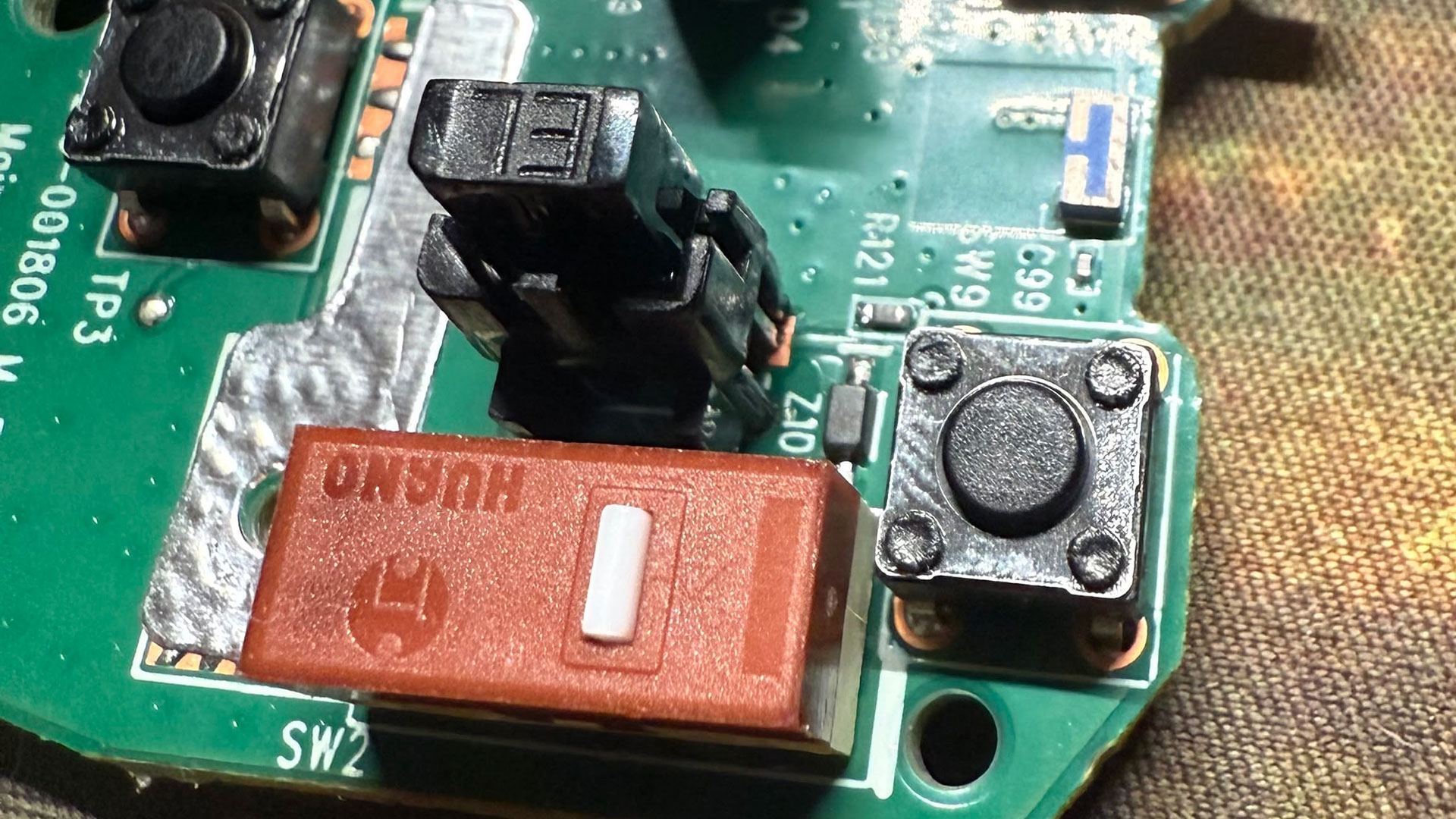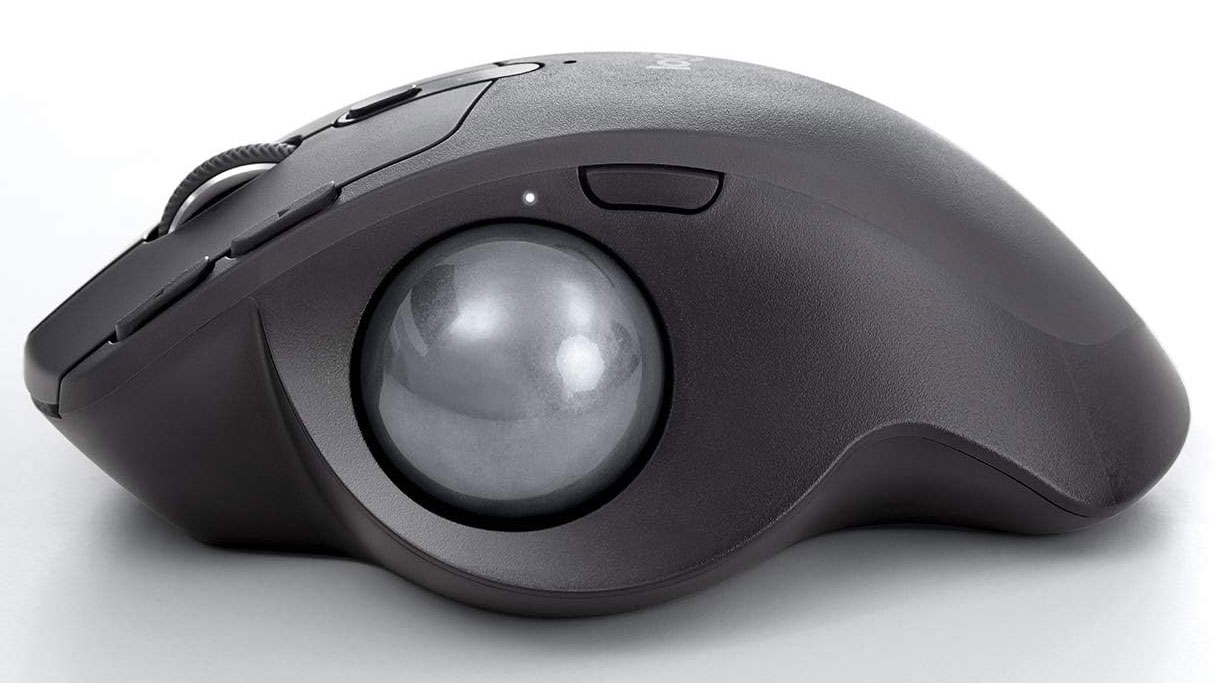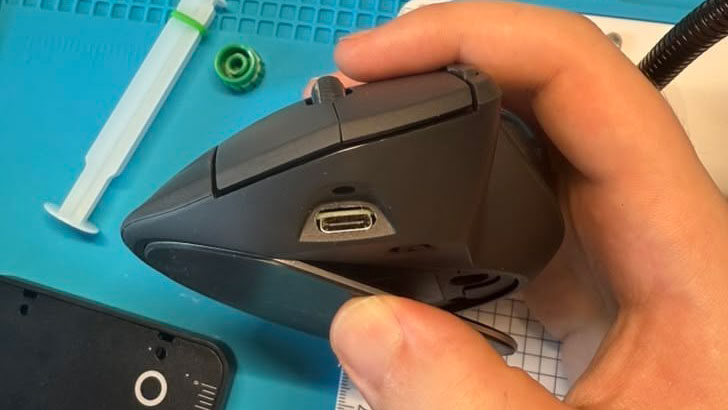Enthusiast accidentally spends nearly $300 modifying 2017 Logitech MX Ergo trackball to fix flaws — appears to have missed 2024 upgrade that solved nearly all of its foibles

Data scientist Sam Wilkinson holds the Logitech MX Ergo trackball in very high esteem. However, he isn’t an MX Ergo flaw denier. And so, after eight years waiting for Logitech to upgrade this trackball, Wilkinson says he decided to take matters into his own hands and build “the mouse Logitech won’t make.” There's just one problem: Logitech actually upgraded the Ergo in 2024 with tweaks that fix most of its shortcomings without him realising, making the project a very unfortunate and rather expensive misstep.
Three aspects of the 2017 MX Ergo “where the sheen of perfection wears off,” according to Wilkinson, are its use of a micro-USB port, its loud and clicky microswitches, and Logitech’s bloated software. We feel those are very valid critiques.

Re-inventing the wheel
Logitech would very likely agree with Wilkinson’s opinions about the hardware wrinkles of the 2017 trackball. That’s why, in late 2024, it released the MX Ergo S. In an unfortunate stroke of luck, it turns out that Logitech had addressed Wilkinson's concerns about switches and USB-C, and he hadn't even realized it. "After first publishing this article a helpful commenter let me know Logitech released the MX Ergo S in late 2024, with quieter switches, USB-C, and a $20 price increase," he wrote. "Let's just pretend I wrote this article a year ago! Still, at least this project let me avoid some e-waste."
Before we go on, we have to point out, and are sure Wilkinson will agree, that this isn’t an entirely economically sound upgrade, even without factoring in the Ergo S launch (especially with the soldering equipment purchased to get the job done). Nevertheless, the dogged determination to upgrade existing hardware, with or without the help of the manufacturer, and even when it doesn’t make financial sense, is admirable in some ways.
In Wilkinson’s blog post, you can read through the whole process of making a DIY-upgraded MX Ergo trackball. One of the first steps taken was to order a small USB-C-equipped PCB for this particular trackball mouse, which he found was already shared through the user portal at PCBWay. Those parts would cost $55, though Wilkinson bought 10 PCBs, so he would have some spares. Around the same time, he decided he needed a $200+ hot-air rework station…
We have some opinions on the best soldering equipment if you are in the market for this kind of gear.

Satisfied with his port wrangling, Wilkinson moved on to microswitch switching. He seemed very happy with some Huano Silent switches, which he described as "almost completely silent, with a soft but satisfying tactile bump when pressed." Impressively, these microswitches only cost $2.99, and de/soldering guides for the MX Ergo are available online.
Get Tom's Hardware's best news and in-depth reviews, straight to your inbox.
$20 Logi Options+ alternative championed - but it's only for Mac
Last but not least, Wilkinson doesn’t hold back in his criticism of the Logi Options+ configuration software, which is “bloated, buggy, and occasionally malware-like,” according to the Oxford Physics graduate. We feel similar pain, but hadn’t previously heard of the $20 SteerMouse software, which gains great praise in Wilkinson’s blog. The tool's UI looks simple and intuitive, and it is said to be “super lightweight” – those qualities tick a lot of boxes, as does its wide pointing hardware compatibility, but be aware that this utility seems to be Mac-only. The software brings the expenditure on the project to $277.99, more than double the cost of the MX Ergo S Logitech launched last year.
In summary, Wilkinson noted that the USB-C port swap wasn’t entirely necessary, but was a fun introduction to PCB component soldering. Meanwhile, the most impactful change, the new microswitches, was the cheapest.
Follow Tom's Hardware on Google News to get our up-to-date news, analysis, and reviews in your feeds. Make sure to click the Follow button.

Mark Tyson is a news editor at Tom's Hardware. He enjoys covering the full breadth of PC tech; from business and semiconductor design to products approaching the edge of reason.
-
4n2earth I have used the MX Ergo for a long time; I think I have bought five or six of them. Most recently I got the MX ERGO S Plus from Best Buy for ~ $120, and I love it.Reply
I am a long time fan of tom's HARDWARE, and I review tomshardware.com pretty much every day.
I value greatly the content provided, in its entirety!
However, I want to comment about the title of this article.
Accuracy is important. The title is just wrong in its implications. There was no accident, and he did not spend "nearly $300" modifying the mouse. He, by your logic, spent MUCH MORE than that! You have to include the price of the car, the house or office, all the food he ate up till that time, etc. etc. etc. So, I call B.S. on the title. If you want to get the reputation of incredible checkout stand sensationalist gossip magazines, keep up the glib stabs to get attention. Or get better at tongue-in-cheek April Fool's joke journalism. Otherwise, my advice is to keep up with the excellent work you guys excel at and avoid the self imposed black eyes this article lends to your cred. -
bit_user LOL, I bought the old version a few months ago, back when I was "stockpiling". I got it preemptively as a replacement for my current M570. I've been using their thumb trackballs for at least 15 years (starting with a wired version) and the generational changes are usually minor enough that I don't pay them much mind, so I figured there'd be little harm in getting the old version. At the time, the price difference was actually about $40, since I got a pretty good deal on it.Reply
Yeah, so I wasn't aware of what the design refresh addressed. Oh well. -
jmcgaw I've been using their trackballs in virtually every form for many years. The only problem I've found really serious is the crappy microswitches they use and I've gotten proficient at replacing them although I probably have three or four dead ones needing attention. I'm on an M575 now and the only problem is a weird "ignore the Bluetooth" problem which affects the trackball and keyboard when they wake up. No solution yet and it can be quite annoying when I need to do something quickly and inputs are ignored and/or garbled. Oh well, life on the bleeding edge...Reply -
bit_user Reply
The click-wheel was the one which died on my last M570. I depend on middle-button more than most people. I know I should've replaced it, but a new one was only like $35 and I didn't have the time to do a switch-replacement.jmcgaw said:The only problem I've found really serious is the crappy microswitches they use
The left-button switch is starting to get a little flaky, on my current M570. I wish they made "gaming" trackballs, with the high-endurance switches those products used. I have one of their gaming mice and its switches seem much more robust.
BTW, the current M570 had an interesting problem that I've never dealt with, before. The wheel filled up with enough dust & lint that it was starting to block the optical sensors used to detect wheel rotation. So, I had to dismantle the thing and indeed there was a clod of crud in there. I tend to have pretty clean hands, at my PC. This is after probably about 4 years or so of daily use.
A more frequent place that dirt can accumulate is in the sensor wells of the marble. I don't know why they place those so low down, where they're basically guaranteed to act as dust traps. -
Alvar "Miles" Udell Just because they released a new version that "fixes" the issues doesn't mean it's up to the same quality as it was before. Also not taking into account the $200 hot air rework station, something this enthusiast will likely use many times he spent less than the cost of the new model, so no real loss there.Reply -
bit_user Reply
I have to ask: are there known regressions in the new model? The subject of the article seemed unaware of the new version, rather than making a conscious decision to stick with the old one. So, I wonder if you're just speaking hypothetically, or based on deeper knowledge of the models concerned.Alvar Miles Udell said:Just because they released a new version that "fixes" the issues doesn't mean it's up to the same quality as it was before.
Hopefully!Alvar Miles Udell said:Also not taking into account the $200 hot air rework station, something this enthusiast will likely use many times -
Alvar "Miles" Udell Replybit_user said:I have to ask: are there known regressions in the new model? The subject of the article seemed unaware of the new version, rather than making a conscious decision to stick with the old one. So, I wonder if you're just speaking hypothetically, or based on deeper knowledge of the models concerned.
Speaking generally, but I know from experience the re-release of the Razer Diamondback was a pale imitation of the original, and the reviews of this mouse on Amazon aren't exactly stellar. -
bit_user Reply
The way I usually look at Amazon reviews is by computing a "lovers/haters" score, since I find their single number of stars to be too opaque. I compute this by summing the percentages of 4+5 reviews for the "lovers" score. The "haters" is the sum of the 1 + 2 star percentages.Alvar Miles Udell said:the reviews of this mouse on Amazon aren't exactly stellar.
Amazon says both the old and new models have 4.5 stars, with 688 and 327 reviews, respectively. If we look at the "lovers/haters" scores, the old one gets 89/6, while the new one gets 87/7. So, given that both have plenty of reviews, that suggests Amazon customers to slightly prefer the old model.